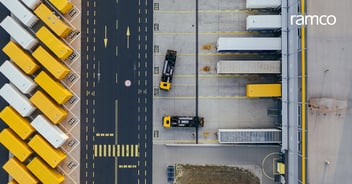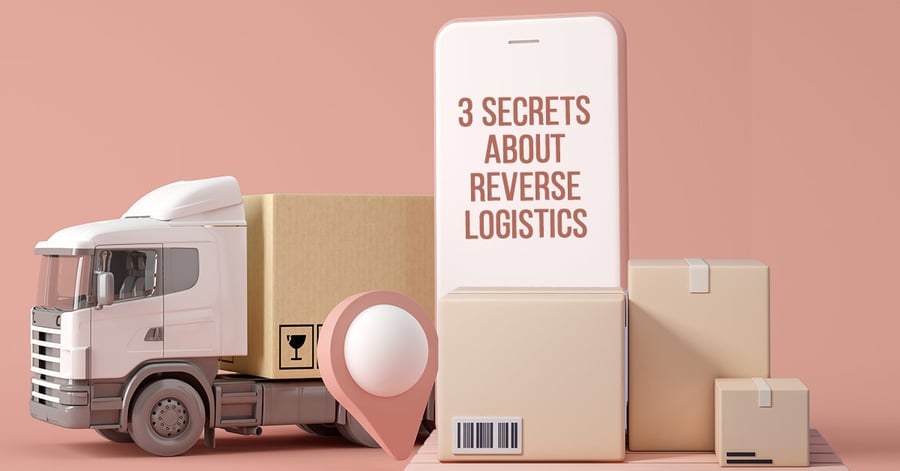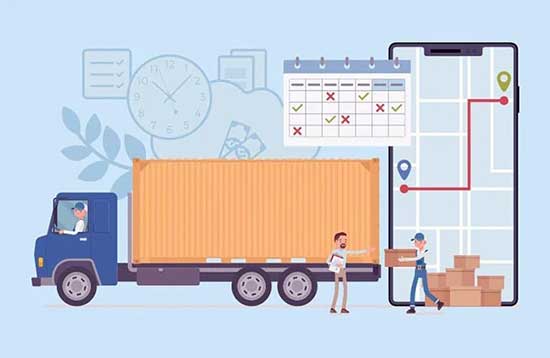
3 Secrets About Reverse Logistics That All LSPs Must Know
Published :

Today, the reverse logistics process has become an essential component of a successful and streamlined supply chain. Albeit it has been a part of the retail industry for over 100 years, it was not a must-needed system back then.
In the last few years, since the upsurge in e-commerce is observed, reverse logistics, meaning consumers shipping goods back to the retailer, has gained popularity and become an integral part of businesses. Moreover, consumers expect these return policies to be easy and fuss-free. Therefore, to meet such customer demands, the companies are putting in the best of their efforts to make it as smooth as possible and have been successful too.
A Logistics Service provider may incur additional expenses and a decline in customer experience if a robust process supported by an end-to-end Logistics Software is not in place. Among multiple use cases, these are the 5 common aspects we notice in reverse logistics.
With cut-throat competition among logistics service providers to add new customers the following aspects can help build a competitive edge towards growth.
In recent times, without strong technological support, traditional logistics operations are unable to handle the large volumes of deliveries and returns
Moreover, the customers look for the convenience of requesting returns smoothly, scheduling a return from the website/app of the retailer easily, accessing, and tracking returns flow via a link in the delivery message.
The initial step in creating an efficient and effective logistics plan should be to digitize and automate the logistics process which would help logistics service providers and shippers coordinate the whole reverse logistics process by planning timely pickups, providing the drivers competitive apps to work with, processing returns and syncing order numbers and so on. Using cloud-based logistics software will help you streamline the operations and gain overall efficiency. For instance, a logistics software system can easily track asset recovery, provide business intelligence analytics and manage refurbishment.
It is preferable to include the recycling or disposal of old parts or goods as the end step of logistics services. A dispatching module enables dispatchers to add on goods for ad-hoc returns to a pre-planned delivery run. If this is followed, the order can be transported to a sorting center at no or little extra cost to the retailer or provider.
It is essential to have an all-inclusive e-commerce readiness with the capabilities such as liability management, warehouse management system, cash on delivery, rider management, document tracker, and franchise management, which can help you manage damaged goods, failed delivery attempts, and compliance requirements.
When a returned product arrives at the warehouse it should be scanned and mapped to a respective order which can be tracked by both customers and shipper to ensure the returned goods are on track.
The next step in the process would be to understand how feasible or profitable it is to ship the product back to shipper or to the regional distribution center. The cost involved in all these operations should be visible for a supply chain planner to take conscious decisions on the reverse supply chain.
Apart from the cost aspect, it is essential to have complete visibility and control over the operations, including reverse logistics operations, shelf life, store inventory, and fleet costs and availability. These are just a few data points that you need to consider for smooth and efficient operations.
Proper data reporting and order inventory management on each and every node of the supply chain will help in reducing losses and achieving faster time to resale the returned goods.
Besides the above-mentioned pointers, a Logistics service provider should consider integrating forward logistics, reverse logistics, warehouse management systems, and inventory management systems, thus, centralizing return centres, using data for optimizing processes, tracking products forward and backwards, and so on.
With the changing needs and demands of customers and new business models, reverse logistics has become the supply chain’s critical part, especially for parcel service providers who serve retailers or e-commerce companies
When the e-commerce delivery system is digitized and automated, reverse logistics service will help reduce losses, improve customer satisfaction and loyalty and play a crucial role in inducing eco-friendly delivery strategies. Ramco’s agile and comprehensive logistics software is a digital platform that is built for LSPs (Logistics Service Providers) including third-party logistics, courier express and parcel and freight forwarders, provides an integrated business solution for smooth and seamless movement of goods
Enterprise asset management (EAM) involves the management of mission critical assets of an organization throughout each asset's lifecycle. EAM is used to plan, optimize, execute, and track the needed maintenance activities with the associated priorities, skills, materials, tools, and information. The aim is to optimize the quality and utilization of assets throughout their lifecycle, increase productive uptime and reduce operational costs.
Enterprise asset management (EAM) involves the management of the maintenance of physical assets of an organization throughout each asset's lifecycle. EAM is used to plan, optimize, execute, and track the needed maintenance activities with the associated priorities, skills, materials, tools, and information.
The software helps in effective maintenance of assets through preventive, predictive, shutdown and breakdown maintenance strategies. The system also helps enterprises mitigate equipment risks by enhanced safety standards. The streamlined operations and improved asset performance helps organizations increase their investment effectiveness.
EAM is important because it helps organizations track, assess, manage and optimize asset quality and reliability. Asset intensive Organizations have hundreds, thousands, even millions of assets which needs to be maintained to maximize / optimize life of these assets to increase the return on investment.
The key features of effective EAM are:
Asset Intensive companies under the following Industries :
Contact us for a meeting and schedule a demo
This differs on case to case basis, based on the type of installation and unique industry specific requirements. Contact us for a meeting and schedule a demo.
This differs on case to case basis, based on the type of installation and unique industry specific requirements. Contact us for a meeting and schedule a demo.
Stay Connected, follow us on LinkedIn / Twitter to know more about EAM Software latest trends.

Ragunathan leads Go-to-Market and Branding for Ramco Systems’ Logistics product, bringing extensive experience in digital marketing and product launches. He has a proven track record of driving impactful strategies that deeply connect with target audiences. Passionate about solving complex problems, delivering scalable systems, and enabling organizational growth through innovation, he excels at collaborating with cross-functional teams. Ragunathan values continuous learning and is committed to building practical solutions that deliver real value.

All Rights Reserved. © Copyright 2024. Ramco Systems.